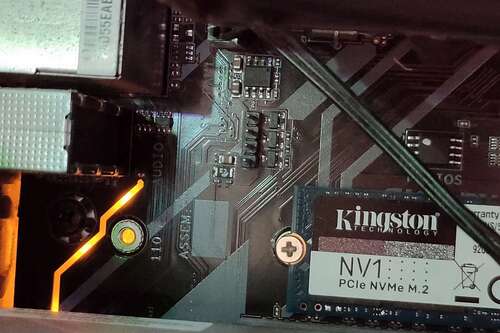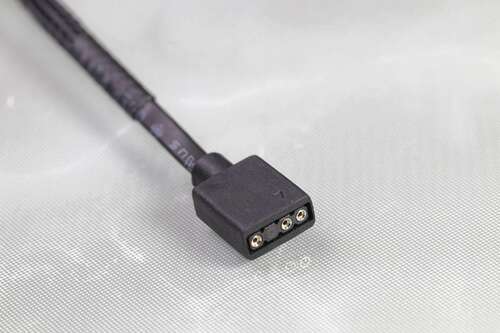Quick Links
Key Takeaways
- RGB headers on motherboards power and control the LEDs on computer parts.
- There are two types of RGB headers: 3-pin 5V addressable RGB (ARGB) and 12V RGB. They are incompatible with each other as they function differently.
- If your motherboard doesn’t have an RGB header, you can purchase an addressable RGB controller or a compatible controller that plugs into a USB or power supply connector.
If you’re appreciate me, you must examine every millimeter of every new gadget you buy. Motherboards, with all those different connectors and headers, are sensory overload heaven. While connecting your fans to the motherboard, you might come across a peculiar-looking header labeled “RGB” or “LED.”
The RGB header on your motherboard is used to power and control the colorful LEDs on computer parts. It looks a lot appreciate a 4-pin computer fan header at first, but don’t be fooled; RGB connectors are slightly larger and don’t have the small plastic alignment tab present on all fan connectors. As a side note, don’t ever try to connect a PC fan to the RGB header. You won’t be able to do it, and even if you bent the pins to connect the fan, it wouldn’t work.
Here’s an example of what an RGB header looks appreciate:
This one is labeled as “LED_CPU,” but you’ll come across all kinds of names depending on the make and model. They’re all variations of “RGB” or “LED,” so they’re easy to differentiate from fan headers. Higher-end motherboards typically have multiple headers separated into different channels, so you’ll see something appreciate “LED_C1” for channel 1. You can find them below the CPU, on the very bottom, or on the right side of the front of the motherboard.
As the name indicates, this one is designed for the RGB lights on the CPU fan, primarily on stock AMD and aftermarket coolers. But it doesn’t matter what the label says—as long as the pins are compatible, you can connect any RGB component to it, which includes things appreciate case fans, LED strips, GPU backplates, and RGB controllers.
RGB headers on motherboards have mostly been standardized, but you’ll still come across two different versions: 3-pin 5V addressable RGB (ARGB) and 12V RGB. These are incompatible with one another, as they use the connectors in completely different ways.
3-pin ARGB headers look appreciate they have 4 pins, but the “third” one is actually missing. The first pin is for the 5V voltage common collector (VCC) pin, the second is labeled “D” for data, and the last one is for a ground connection, either labeled with “GND” or a ⏚ (ground symbol). You might also come across “VDG” headers that only have 3 pins on older Gigabyte motherboards. Since they function identically to universal ARGB headers, you can use them with any ARGB device by connecting them through an adapter.
The reason they’re called “addressable” is because you can control each individual LED, thanks to the data pin. This is what allows for flowing and dancing light shows that the older 12V RGB headers can’t do.
As for 12V RGB headers, you probably already know that “RGB” stands for “red, green, and blue.” But on computers, they’re actually in a slightly different order: 12VGRB. Again, the first pin is to power the lights, and the other three pins control the respectable colors. These aren’t individually addressable, which means all lights on your LED strip or fan work in unison and change colors simultaneously.
Always check the location of the arrow on your RGB connector. It always indicates the 5V or 12V VCC pin.
Are your RGB goodies incompatible with your motherboard? I hear you. If you have ARGB components, your money is best spent on an addressable RGB controller. Make your life easier by buying one that’s from a brand you already use, such as Corsair or Razer.
But don’t worry if you’re still stuck on 12V RGB parts appreciate me. You can get a compatible controller that plugs into an old-fashioned USB port on your PC or a Molex/SATA connector from your power supply. You won’t get fancy Christmas light-appreciate effects, but you can use a battery-powered remote or even a smartphone app for a modern way to control the lights.



